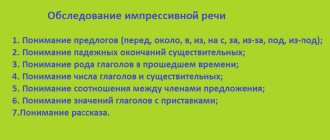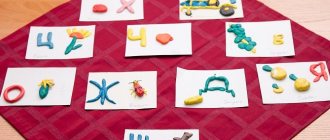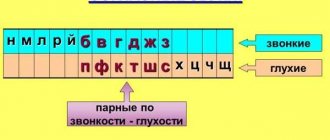Each of us at least once in our lives has had to face the need to learn some text by heart. For some people this comes very easily and does not cause any difficulties, but the majority have certain problems, because they simply cannot remember the necessary material, regardless of its volume and content.
Although scientists still cannot fully study the functioning of the human brain, they still argue that people use only a small part of the abilities of this important organ for humans. The processes occurring in the consciousness of any person can be corrected with the help of regular training, and the mechanisms of consciousness, such as memory, can be developed to the maximum.
If you become the owner of a strong memory and can memorize a text of scientific, artistic or any other content you need, you will increase your intellectual level, earn the respect of family, friends, colleagues, superiors, teachers, and achieve phenomenal success in your chosen field of life.
How can you learn to quickly memorize any text by heart? There are specially developed methods and methods that we will tell you about today.
How to quickly learn a text: effective memorization techniques
The ability to remember key details of a future speech is a useful skill for anyone. To learn the material quickly, you need to eliminate all external stimuli and create a working environment. For effective learning, it is better to use several channels of perception and adhere to the following algorithm:
- Read the entire text several times, understand its meaning.
- Use associations (remember the picture drawn by your imagination while reading or listening).
- Divide the material into logical parts and make a plan.
- Write down supporting words or quotes for the points.
- Retell each part separately, then connect the story.
If you need to learn the text word for word:
- If possible, listen to the audio version based on the printed version.
- Rewrite each paragraph of text several times.
- Use the corrector to fill in the endings of the sentences and fill in the missing words from memory. Reproduce the material orally or in writing.
If a child remembers the text, you need to make the process as exciting as possible using game techniques:
- Replace some of the words with pictures and recreate the story. Gradually paint over all the new words and draw pictures in their place, retelling the material each time.
- Make a copy of the text and cut it into small pieces. Now you can put it together like a puzzle, while simultaneously reading the resulting sentences. The brighter and funnier the font, the better.
- Complicate the task: skip an essential point or add extra facts.
To quickly learn a large text, it is advisable to:
- Divide it into parts and work with each of them separately.
- Make a plan for the story or enter basic data into a table.
- Repeat the material regularly with short breaks.
- Use multiple channels of perception (for example, visual and auditory).
Information that is interesting to the reader is stored in memory automatically. Text written in clear language is easier to learn. Complex material needs to be simplified as much as possible and all unclear points clarified.
How to read to remember better
But, still, what is the best way to remember and assimilate a large amount of information? A trained memory is capable of accepting a large amount of information if one resorts to improving the quality of its assimilation. There is a whole technique that can help you absorb information and remember it in the shortest possible time:
- Concentrate and try to understand the goal, namely, think about how this information will be useful and whether it will bring positive results.
- Read the table of contents and contents of the material. The main purpose of this technique is to realize what the reader is about to learn. This method can not only train the memory, but also prepare the reader for long or short passages.
- To memorize and improve the assimilation of the information provided, it is advisable to choose only paper media, since proofreading text from electronic media reduces productivity by 30%.
- Getting rid of external irritating factors is another important point for a productive result.
- A brief summary of each chapter will be a useful method for better understanding of the information.
- Trying to retell the material you have read to your interlocutor will help the reader understand the information well. You just need to read, not memorize the information, but try to understand it.
Pictogram method
Pictograms are a way of replacing words and sentences with pictures. You don't have to be an artist to do this. The simpler and funnier the pictures, the better. Children need visualization, interest, and involvement in the process. In this case, these aspects are best combined.
Methodology:
- Divide large text into parts. Work with a short story as a whole.
- Divide the board or piece of paper into two parts. On the left, write down the numbered sentences, each on a new line.
- Read the sentences, understand new words.
- Read each sentence separately, depicting it with the picture on the right. You can start by replacing individual words, gradually making the work more complex.
- Close the left side. Retell the text based on the pictures an unlimited number of times.
- Try a retelling without relying on pictures.
While getting acquainted with the game, draw pictures yourself. Then, gradually, you can involve children. This method is also suitable for adults if the material is presented in more or less simple language.
Online school EnglishDom.com - we inspire you to learn English through technology and human care
Only for Habr readers, the first lesson with a teacher via Skype is free
! And when you purchase a lesson, you will receive up to 3 lessons as a gift!
Get a whole month of premium subscription to the ED Words app as a gift
.
Enter promo code ebbinghaus
on this page or directly in the ED Words app. The promotional code is valid until 04/14/2021.
Our products:
- Learn English words in the ED Words mobile app
- Learn English from A to Z in the ED Courses mobile app
- Install the extension for Google Chrome, translate English words on the Internet and add them to study in the Ed Words application
- Learn English in a playful way in the online simulator
- Strengthen your speaking skills and find friends in conversation clubs
- Watch video life hacks about English on the EnglishDom YouTube channel
Using notes and exercises
This method is especially suitable for visual learners (those who perceive information better through vision), but anyone can use it. The result will be in any case, it will just take someone more time to achieve it.
Methodology:
- Divide the text into several parts. Work on each part separately.
- Read the first part, understand unfamiliar words and expressions.
- Rewrite part of the text 1-2 times.
- Use a stationery proofreader to color over individual phrases. Complete them from memory. Test yourself.
- Rewrite the text again. Paint twice as many fragments. Fill in the blanks.
- Repeat until you can reproduce the entire paragraph.
- Put all the parts together and retell the text orally.
This work can be combined with listening (the method described above), then the result will be high-quality and long-lasting.
Use audio whenever possible
This memorization technique combines two techniques - listening and reading the text. Use audio if this is how you understand the information best. The method will be more effective if you have the text in audio format and a text document. This way you can listen to the information and at the same time follow the text version.
How else can you use this method? Let's imagine that tomorrow there is an important presentation, but there is absolutely no energy to study it. Read the text aloud, recording your voice on a voice recorder. Then listen to the recording in your free time. For example, when you are getting ready for work, you take public transport and go up to the office. Have you noticed how well the lyrics of songs are remembered? So, the same thing will happen with the text. Even if they are not your favorite tracks, they are still good and effective!
Repetition method
If you have very little time to study, and you need to quickly learn a text in English, you can use the technique of constant repetition.
Methodology:
- Write short excerpts from the story on sheets of paper. It is better to use bright markers in flashy colors.
- Hang them around the house: above the kitchen table, in the bathroom, on the mirror in the hallway, on the balcony.
- When you visit these places or just pass by, you will see: your eyes will be “hooked” on the sentences, and what you read will be stored in your memory.
Of course, the technique itself will not work, but as an addition to other methods it will give good results and speed up memorization.
What helps memory to be in good condition?
Everything in the human body is interconnected, this also applies to memory. To keep her in order, you need not only to train your thought processes, but also to monitor the state of your brain.
Recommendations:
- Both adults and children should get enough sleep every day. Experts say that people who sleep less than seven hours a night are prone to forgetfulness and inattention. Therefore, be sure to follow your daily routine;
- Our brain, like the whole body, needs energy to work, we take it from food. Therefore, watch your diet, exclude processed foods and other harmful foods from it. Eat more cereals, vegetables and fruits;
- Don’t forget about physical activity and walks in the fresh air, this will help saturate the blood with oxygen, which has a good effect on the entire body and memory.
Planning
If there is no task to learn an English text by heart, but you can convey everything in your own words, a detailed plan for the future story will help a lot. It is important to understand the meaning of the text and understand what you are going to talk about, and the task must correspond to the level of language proficiency.
Methodology:
- Read the text carefully, write down unfamiliar words.
- Break the material into logical parts (introduction, key thoughts and facts, ending).
- Select support points. Make a detailed plan for each part. Present it in the form of short points, quotes or questions.
- Retell the text according to plan several times, looking at the original if necessary.
- Retell the text without looking at the original, and then without using the plan.
Key points in the form of quotes can be highlighted directly in the original text, underlining them with a pencil. And write your notes in the margins.
Method number 2. Mnemonic memorization
The second method is a variation of the first method, because it is also based on the life experience that a person received earlier. Using this method, you will memorize the text, translating it into images familiar to your consciousness. Mnemonic memorization helps to learn voluminous text that does not carry any semantic load: telephone numbers, dates, addresses, names, capitals, etc.
Thanks to this method, you will increase your ability to mechanically remember what is happening and will be able to get rid of everyday forgetfulness.
There are several effective exercises for developing attention and memory using mnemonics:
✔ as soon as you wake up in the morning, do not be lazy and count from 100 to 0. This must be done as quickly as possible;
✔ Try to use the calculator as little as possible to multiply and add numbers. Do it in your mind!
Mind map
This is a map of thoughts that allows you to structure even very difficult to understand material. In a free style, a map of what was read is depicted, on the basis of which the material is retold. This technique will be useful for those who need to quickly learn a text, but do not necessarily need to reproduce it verbatim. A bright plan, where everything is laid out on shelves, will be well imprinted in the memory.
Methodology:
- Highlight the key problem. Write or draw it, circle it.
- Depict secondary thoughts as branches in any direction. Some people draw left and right, others from top to bottom. There are no restrictions.
You will get a detailed plan in a convenient format, based on which it is easy to retell the material in your own words. For those who like to draw, you can replace sentences with pictures. This will make the process more interesting and even help you learn the information better.
Method number 1. Rational memorization
This method is suitable for those people who have a well-developed logical memory, because in the process of memorizing a text in a person’s mind, the logical and semantic connections of the information learned by heart with previously acquired life experience are consolidated.
A person using this method becomes aware of the text he has read, making it much easier for him to perceive and remember the necessary information. The method of rational memorization will help not only to memorize the text, but also to increase the level of knowledge and intellectual abilities.
Mnemonics
This method is a set of techniques and methods that simplify the memorization of various information. It usually requires more effort to use effectively, but is better used in situations where you need to remember things like lists or structures. For example, if you need to remember a list of medications of a certain type, mnemonics will help you do this better than other methods.
Mnemonics is based on the formation of associative series and sequences when a person replaces abstract objects with real concepts. The main thing is to use bright, interesting associations.
In mnemonics, there are several most well-known techniques:
- Acronym: You make a combination of letters that “encrypts” the complete information for memorization.
- Acrostic: You create a poem in which the initial letters of the lines form a word.
- Keywords: You highlight key words in phrases. By remembering them, you restore the entire phrase in your memory.
- Rhyming: You make up rhymes to help you remember words or numbers.
- Image-name technique (suitable for remembering names): you come up with any clear connection between a person’s name and his physical characteristics.
- Chaining: You create a story in which the word or thought you want to remember causes a chain reaction and draws the next words with it.











